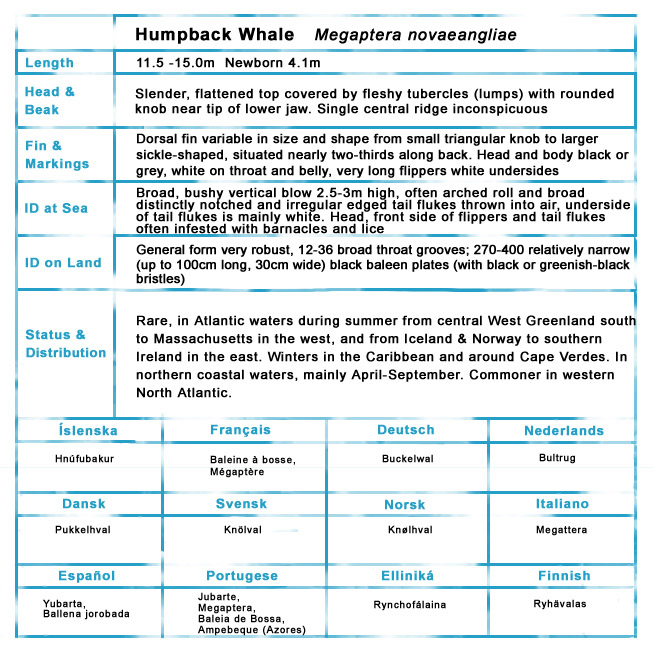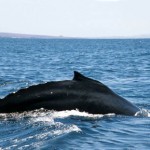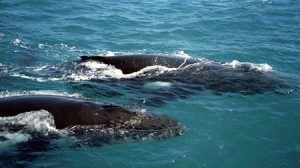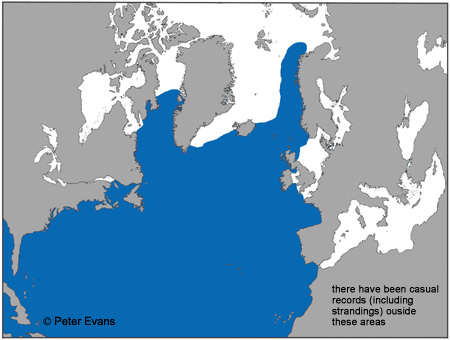Humpback whale
 Humpback whale (Latin name: Megaptera novaeangliae)
Humpback whale (Latin name: Megaptera novaeangliae)
Distribution Map
The blue area shows where humpback whales can be seen.
![]()

Species Identification
 Length: 4.1m/13.5ft (newborn); 11.5-15.0m/37.9-49.5ft (adult)
Length: 4.1m/13.5ft (newborn); 11.5-15.0m/37.9-49.5ft (adult)
Head and Beak: Humpback whales are slender with a flattened top covered by fleshy tubercles (lumps) with rounded knob near the tip of the lower jaw. Single central ridge is inconspicuous.
Fin and Markings: The humpback whale dorsal fin is variable in size and shape from a small triangular knob to a larger sickle-shaped fin, situated nearly two-thirds along the back. Head and body black or grey, white on throat and belly; very long flippers (white undersides).
ID: Broad bushy vertical blow 2.5-3.0m high; often arched roll and broad, distinctly notched and irregularly-edged tail flukes (with partial white undersides) thrown into the air. The humpback whale head, front side of flippers, and tail flukes are often infested.
Status and Distribution: Humpback whales are rare, in Atlantic waters of Europe, from Iceland and Norway south to south-west Ireland. In coastal North European waters, mainly April-September, but some sightings extend to mid-winter (December and January).


